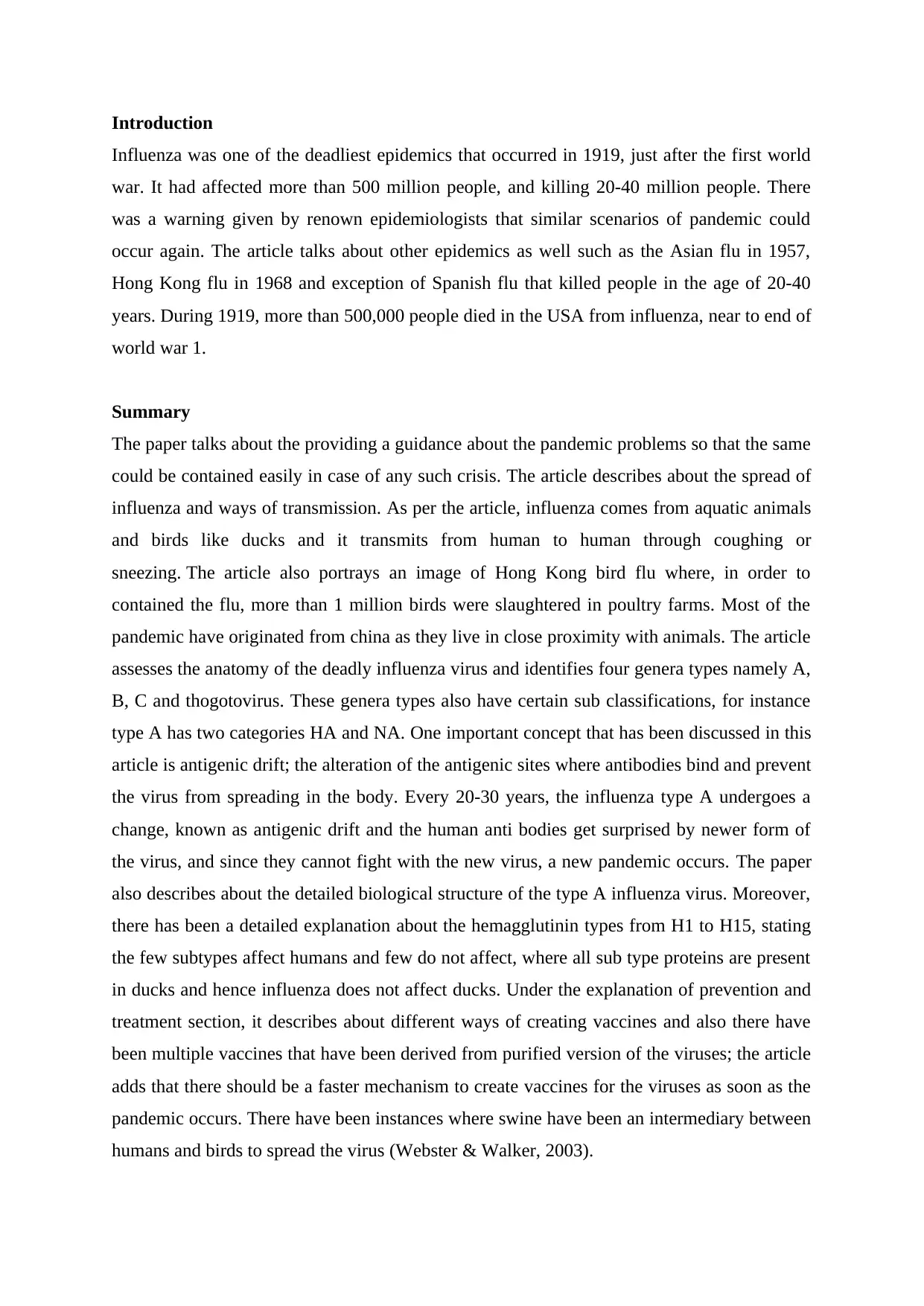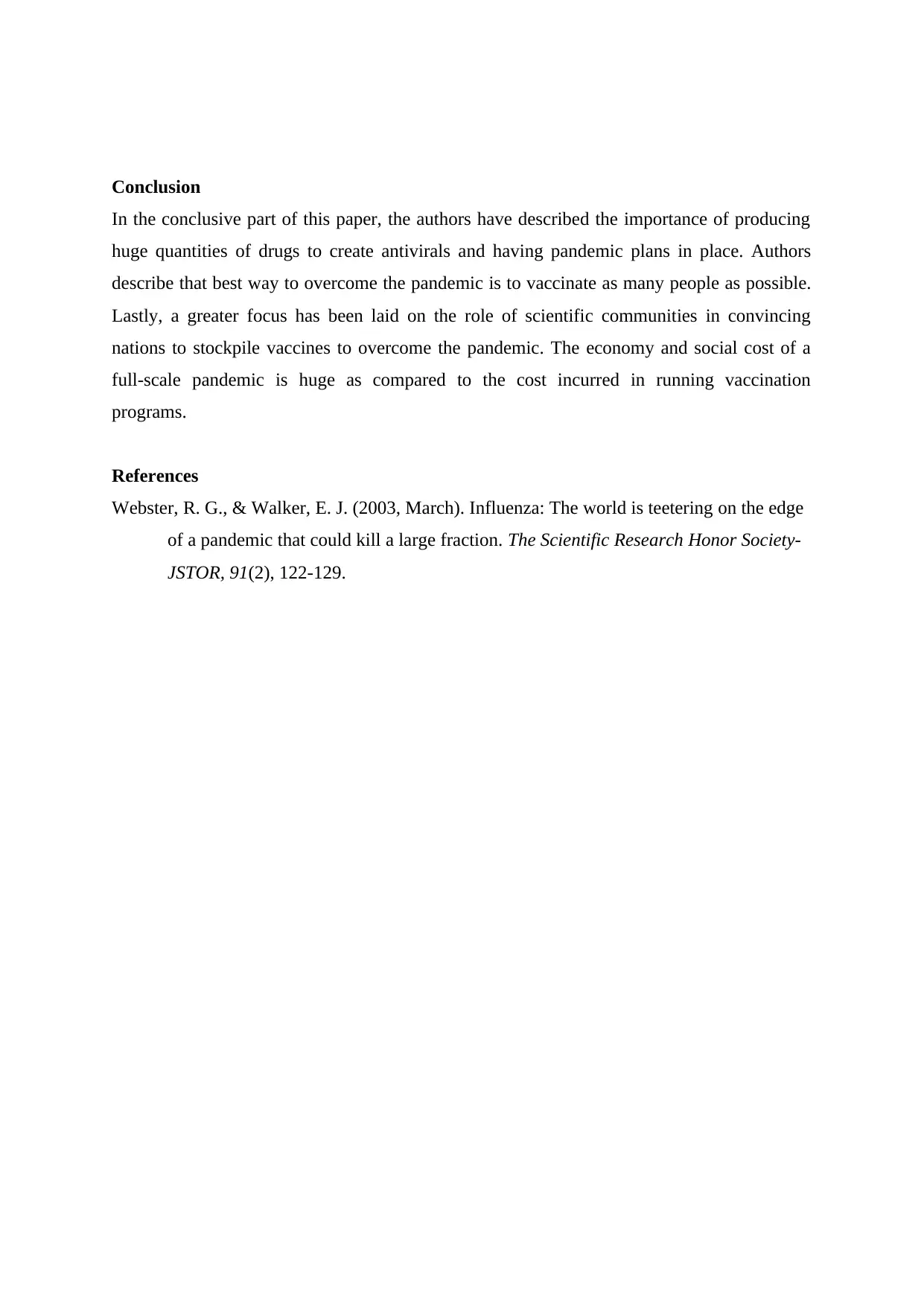Influenza Pandemic: Causes, Transmission, and Prevention Strategies
VerifiedAdded on 2022/08/03
|2
|641
|53
Report
AI Summary
This report provides a detailed analysis of the influenza pandemic, drawing from the article by Robert G. Webster and Elizabeth Jane Walker. It begins with a historical overview of the 1919 influenza pandemic and highlights the potential for future outbreaks. The report explores the transmission of influenza, its origins in aquatic animals and birds, and the role of antigenic drift in creating new strains. It assesses the anatomy of the influenza virus, including its different genera and subtypes, and discusses the importance of rapid vaccine development and antiviral drug production. The report emphasizes the role of scientific communities in advocating for vaccine stockpiles and the economic and social costs associated with pandemics. It concludes by highlighting the critical need for vaccination programs and preparedness plans to mitigate the impact of future influenza outbreaks.
1 out of 2








![[object Object]](/_next/static/media/star-bottom.7253800d.svg)